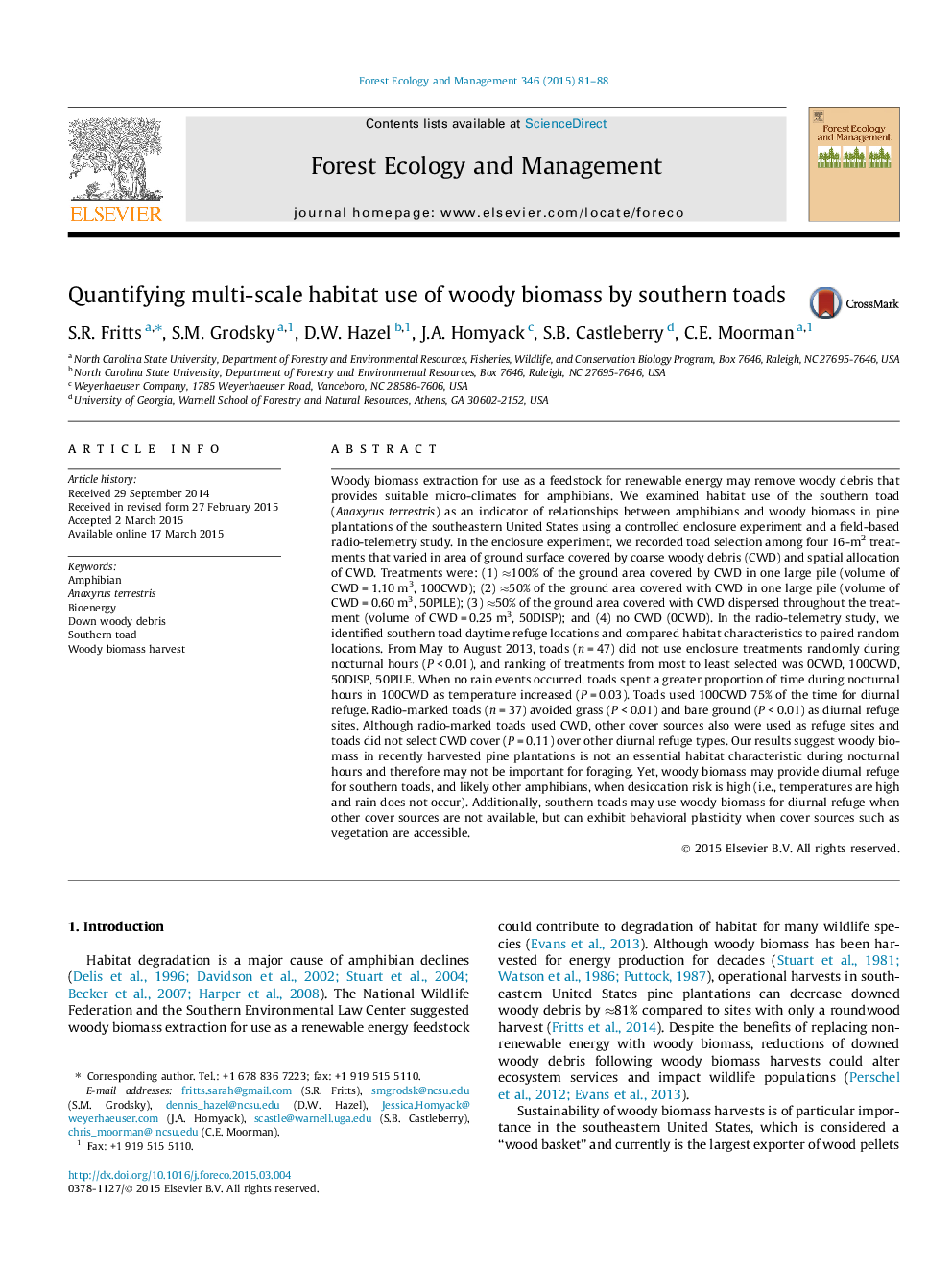| کد مقاله | کد نشریه | سال انتشار | مقاله انگلیسی | نسخه تمام متن |
|---|---|---|---|---|
| 86331 | 159179 | 2015 | 8 صفحه PDF | دانلود رایگان |
• We used the southern toad as an indicator of amphibian selection of woody biomass.
• Toads selected bare ground during nighttime activity hours.
• Toads used woody biomass piles for diurnal refuge when vegetation was not available.
• Toads used, but did not select, woody biomass when vegetation was available.
• Toads selected woody biomass more often under hot and dry conditions.
Woody biomass extraction for use as a feedstock for renewable energy may remove woody debris that provides suitable micro-climates for amphibians. We examined habitat use of the southern toad (Anaxyrus terrestris) as an indicator of relationships between amphibians and woody biomass in pine plantations of the southeastern United States using a controlled enclosure experiment and a field-based radio-telemetry study. In the enclosure experiment, we recorded toad selection among four 16-m2 treatments that varied in area of ground surface covered by coarse woody debris (CWD) and spatial allocation of CWD. Treatments were: (1) ≈100% of the ground area covered by CWD in one large pile (volume of CWD = 1.10 m3, 100CWD); (2) ≈50% of the ground area covered with CWD in one large pile (volume of CWD = 0.60 m3, 50PILE); (3) ≈50% of the ground area covered with CWD dispersed throughout the treatment (volume of CWD = 0.25 m3, 50DISP); and (4) no CWD (0CWD). In the radio-telemetry study, we identified southern toad daytime refuge locations and compared habitat characteristics to paired random locations. From May to August 2013, toads (n = 47) did not use enclosure treatments randomly during nocturnal hours (P < 0.01), and ranking of treatments from most to least selected was 0CWD, 100CWD, 50DISP, 50PILE. When no rain events occurred, toads spent a greater proportion of time during nocturnal hours in 100CWD as temperature increased (P = 0.03). Toads used 100CWD 75% of the time for diurnal refuge. Radio-marked toads (n = 37) avoided grass (P < 0.01) and bare ground (P < 0.01) as diurnal refuge sites. Although radio-marked toads used CWD, other cover sources also were used as refuge sites and toads did not select CWD cover (P = 0.11) over other diurnal refuge types. Our results suggest woody biomass in recently harvested pine plantations is not an essential habitat characteristic during nocturnal hours and therefore may not be important for foraging. Yet, woody biomass may provide diurnal refuge for southern toads, and likely other amphibians, when desiccation risk is high (i.e., temperatures are high and rain does not occur). Additionally, southern toads may use woody biomass for diurnal refuge when other cover sources are not available, but can exhibit behavioral plasticity when cover sources such as vegetation are accessible.
Journal: Forest Ecology and Management - Volume 346, 15 June 2015, Pages 81–88
